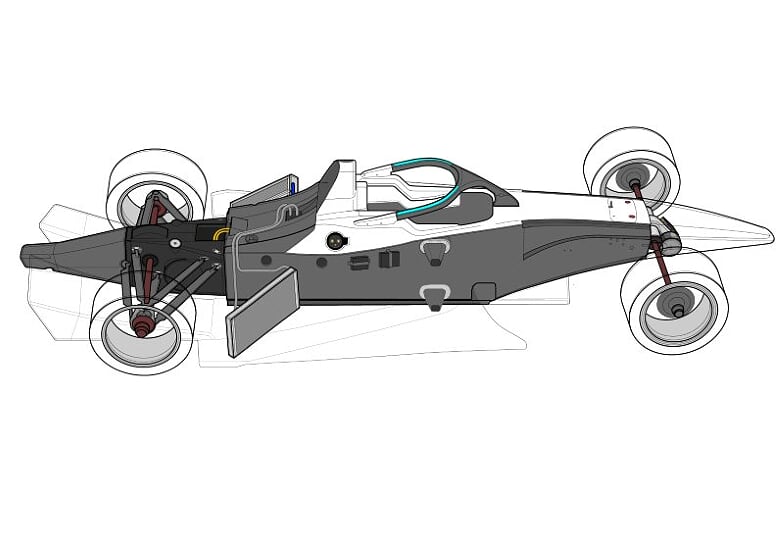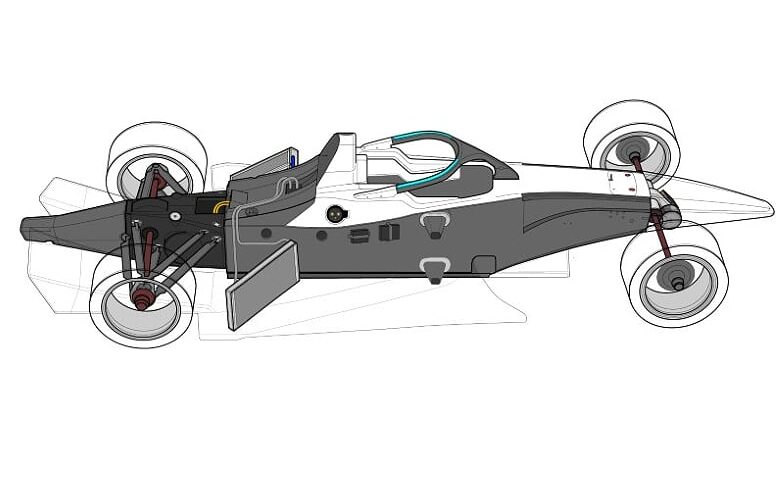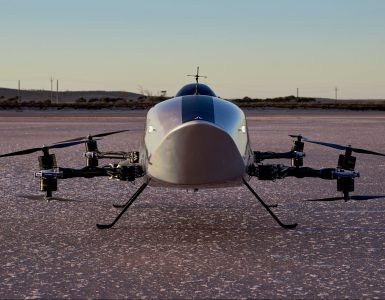Since Formula E’s founder Alejandro Agag first outlined the plan for the category on a napkin in a restaurant with FIA president Jean Todt, the sport has worked hard to evolve a road map of the direction it will take in the coming years. This route is punctuated by four yearly tenders for the chassis and battery, having these fixed points allows the sport to structured plan to make major changes to the technology.
This next tender process is complete, and the new third generation car was slated to appear in Season 9 in 2022. However, due to the global coronavirus pandemic, it will arrive at least a year later. Given the last generational update gave us the exciting looking Gen2 car with its full race lasting battery, what will the Gen3 car give us? The early specifications might surprise you.
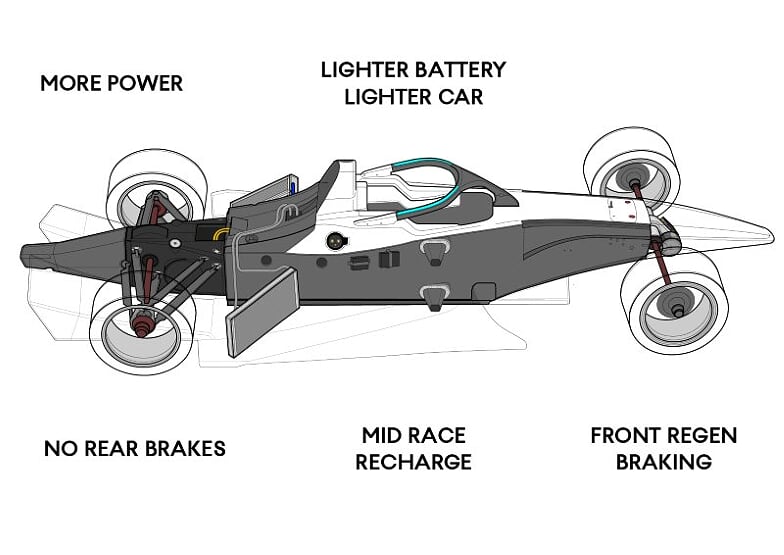
After the original bidders for the first Formula E package failed to deliver, it was left to a small group of specialists under the direction of Spark Racing Technologies to develop the Gen1 car. Dallara with the chassis, Williams with the battery, McLaren with the motor\electronics, Alcon with the brakes and Hewland with the gearbox, all came together to get the series racing in 2014. In that first season, the whole package was specified, and all teams ran the same hardware. For Season two, the teams were allowed to develop their own powertrain (Motor, Inverter and Gearbox). Season 3 brought the first Biennial update, with the car gain gaining a new bi-plane nose wing, updated battery and tyres.
For Season 5, we had the appearance of the Gen2 car, now with McLaren making the battery which had double the capacity of the old version, allowing the car to race from flag to flag without stopping. Qualifying power had jumped to 250kw (335hp), the weight was similar, and the car gained a unique bodywork style to make it stand out from other series. As specified in our previous tech analysis, Season 7 is due to have the Gen2 EVO update introduced with further exciting styling updates to the bodywork.
As the essence of Formula E is to excite people with the prospect of electric vehicles, it is all too aware of the shortcomings people express with these EVs and, for similar reasons, with Formula E itself. Having shed one monkey from its back with the Gen2 battery lasting a full race distance, mid race car swaps in seasons 1-4 were too much of a reminder that range anxiety is peoples biggest concern with EVs. What next Formula E and EVs then? Speed and weight, the two go together hand in hand along with range. More power eats up more battery. If the cars could be lighter, they’d go faster, but the weight of the battery remains a big handicap compared to combustion-engine race cars. If the car had more power and a lighter battery, to last the 45-minute race, it would need to regenerate more energy under braking and may be even get a recharge during a race.
This is the tack the Gen3 car has been aimed at, to achieve this there is a lot of new technology that needs to be developed and matured, and in a very short space of time.
POWER
First off, the Gen3 spec car will have a qualifying output of 350kw, that’s 100kw more than the current race car, a gain of 134hp to 469hp. This pushes the car power output well up the FIA ladder, more than F3 cars, not quite at the level of F2. Although the FE car’s weight is higher.
This change doesn’t have a major effect on the chassis, the motor itself and the associated systems are the team’s responsibility. So, immediately the development load is passed off from Spark, so they can focus on bigger issues.
BATTERY
For the battery partner, the task will be to build a new battery, slightly smaller in capacity to the current spec, but with a much-reduced weight. The FE rules set out the maximum weight for the cells inside the battery, in the current Gen2 battery this is 284kg, but will reduce to 180kg, with the related parts around the cells also slimmed, the battery aims to be 120kg lighter, forming most of the weight loss from the new car.
As mentioned above, the battery loses a few kwh from its capacity which will help reduce the weight, but this is only a 5.5% reduction in capacity to 51kwh. But Formula E has an exciting way to add that lost energy back into the car during the race, mid race recharging pitstops!
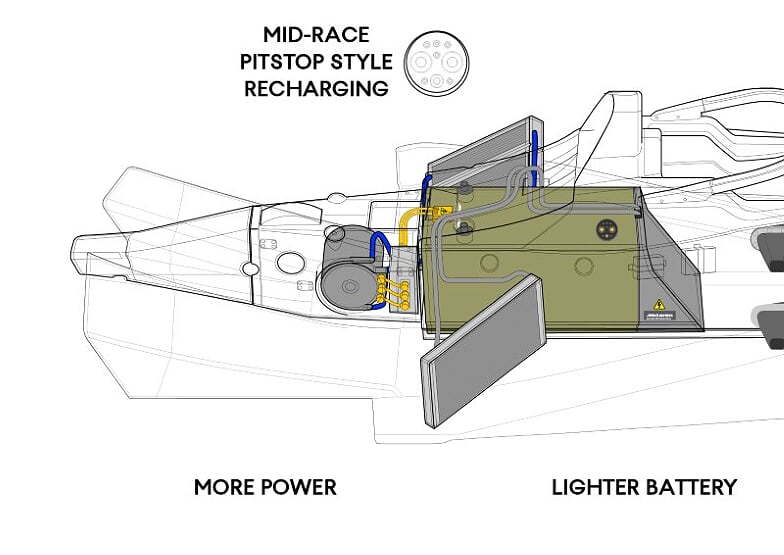
With the mid race car swaps gone since season 4 and no desire to ship lots of extra tyres around the world just for a mid-race tyre change, FE has lost its mid-race tactical jeopardy hotspot. So, fast charging pitstops meet the exciting race brief, save weight in the battery and show off the huge increase in rapid charging times for EVs. Plans are set for a 30 second recharge pitstop mid-race, at a rate of 600kw which would top up the battery and replace the lost 4kwh from its spec. This is likely to look akin to an old F1 refuelling stop, with a mechanic stepping in to attach a large connector to the car, albeit with a heavy electric cable attached rather than a fuel filled pipe!
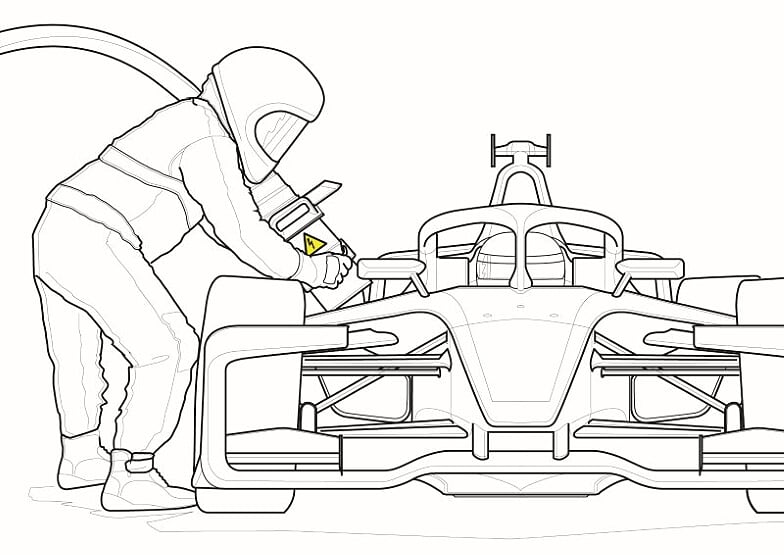
Even for road cars, this technology doesn’t exist as yet. It will be a massive leap for the sport to develop the technology, even with the delay to the Gen3 car’s introduction. There are significant hurdles to overcome; having a battery that can accept such a high charge rate, then the cable/connector to transfer the power at the pit stop, managing the heat generated and the obvious safety aspect for all involved. This is the first risk in the Gen3 car meeting its brief in time.
REGEN
Over the first seasons of Formula E, regenerative braking has been a kay part of making the battery last the full race distance. As regen braking puts a lot of heat into the battery and electronics, it has been capped. Currently 150kw can be regenerated from the rear wheels by the Motor Generator Unit (MGU) under braking. For Gen3, this will be 350kw! This is likely to give the design teams some headaches, as there’s the heat build-up in the battery and inverter, the stresses on the drivetrain and the software algorithms to make it all work.
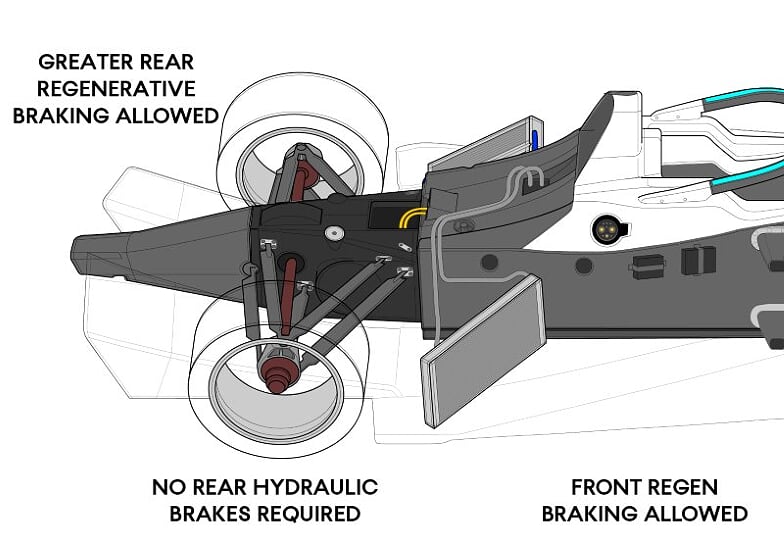
But that’s not all. In addition, there will be a new front axle regen system. This will link the front wheels to another MGU in the front of the car. Under braking, the motor will generate electricity to be saved in the battery, braking the front wheels as it does so. This MGU will not be used to power the car though, it will only work in generator mode for the time being. This system will be a spec part supplied to all teams. To accommodate this, the front of the chassis and the front suspension will need to be wholly redesigned to take the MGU and the driveshafts that link it to the front wheels.
With this level of braking, the front brakes load will be eased and the rear brakes, which already apply far less retardation than the fronts, will be redundant. Yes, that’s right, there will be no rear brakes on a Gen3 car! What’s more, the front brakes will be aided by the front regen system, so much that the split between hydraulic braking and regen braking will need to be managed a brake-by-wire unit. So, that there will also no direct pedal connection to the front brakes.
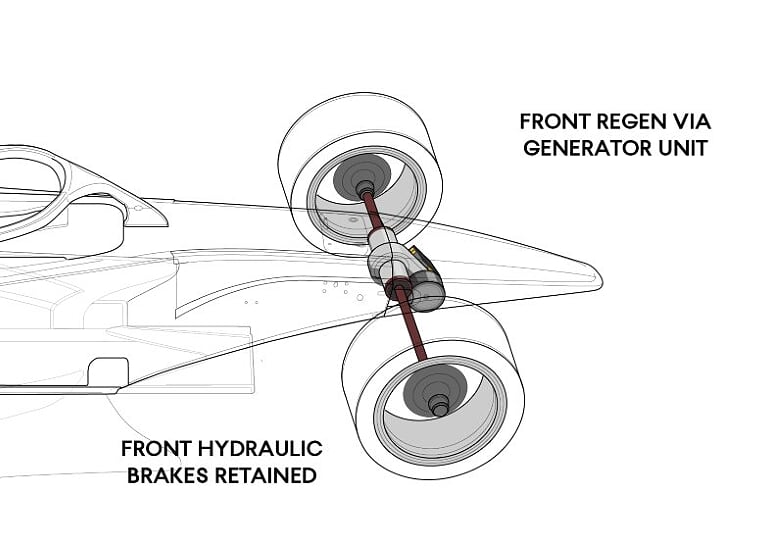
This at first sounds alarmist, no rear brakes and no direct pedal connection to the front brakes would surely be a safety issue, but rear brake-by-wire units have been in F1 since 2014 and in FE since 2018, also LMP1 endurance race car feature a front brake by wire setup, plus F1\FE cars hardly use the rear hydraulic brakes at the moment anyway, due to the regen braking effect. Of course, the electronic safety controls will need to be enhanced and tested before this can be signed off for track testing. But again, no current FIA race car is allowed to run without brakes, so this new technology needs to proven and puts the Gen3 project at risk.
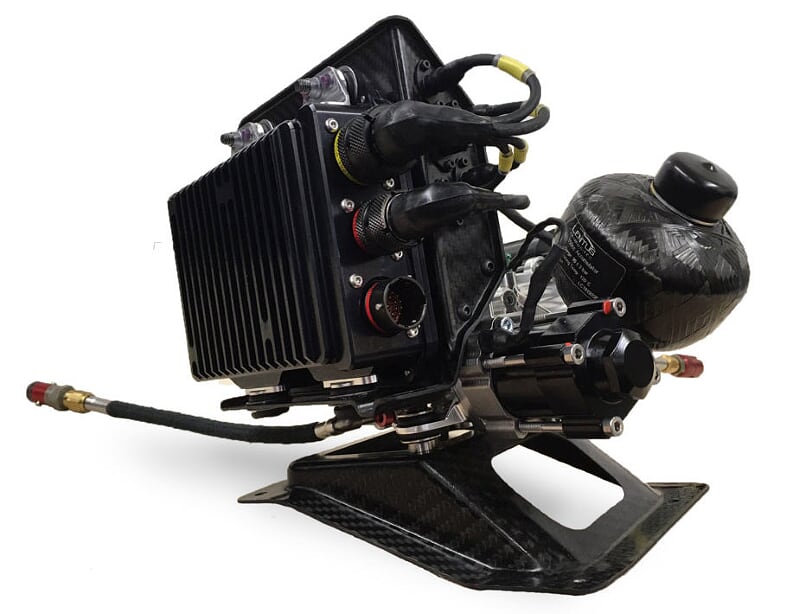
AESTHETICS
Other changes will of course be on the bodywork, this hasn’t even been teased yet, even if it is decided at this early stage. No doubt, Formula E will be keen to continue the radical theme is started with the Gen2 car.
Along with this, there is a tyre tender and the potential for the cars to run 20” rims, going even larger than F1 which will have switched to 18” rims by then. Having larger rims will only focus attention of the lack or rear disc brakes.
It’s now down to the myriad of partners, developing the car with Formula E and the FIA to deliver robust solutions to the challenging brief. An extra year of development will be hugely important, if the sport isn’t to lose face with a watered-down specification for the new Gen3 race car. To date, Formula E development has been done behind closed doors and without leaks. It might not be until the car’s launch that we get to see if the planned technology has made it on to the car.
